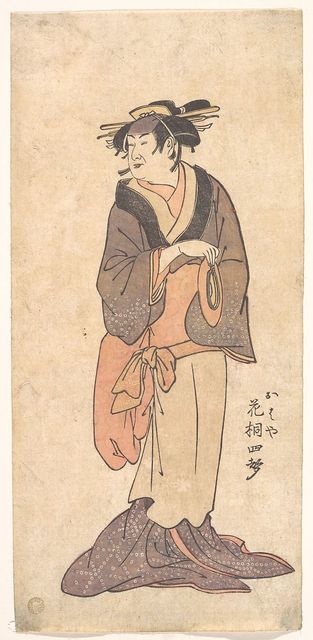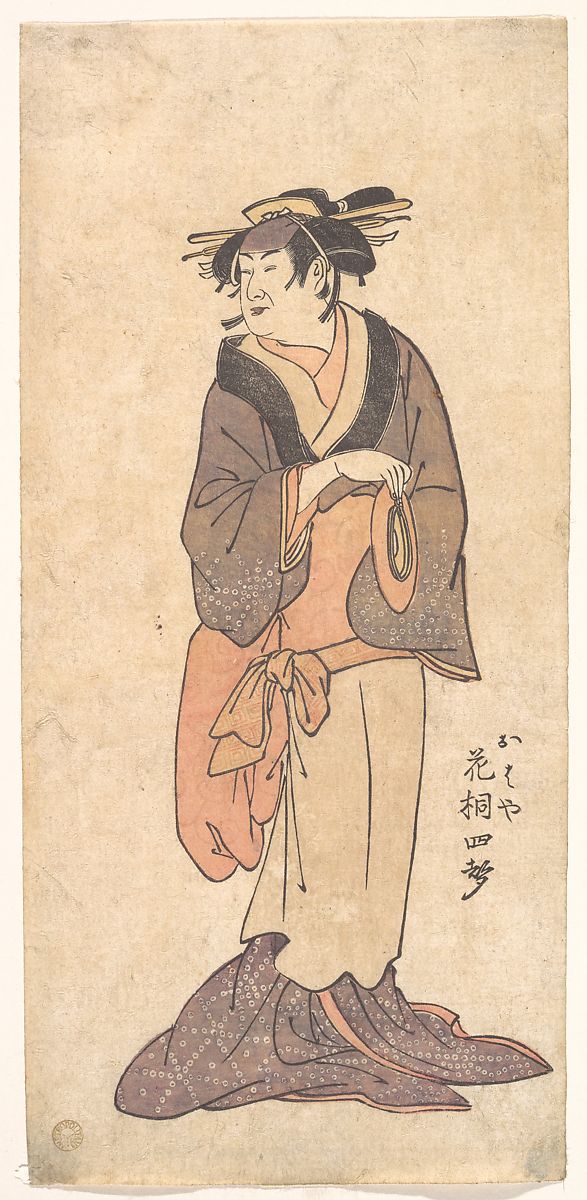"The Onnagata Actor Hanagiri Toyomatsu (Shisei) III as Ohaya" (1793) by Ryūkōsai Jokei

Full description
Artist: Ryūkōsai Jokei Medium: Woodblock print; ink and color on paper; vertical hosoban Dimensions: H. 12 1/16 in. (30.6 cm); W. 5 9/16 in. (14.1 cm)
The shogunate prohibited the wakashu and the most blatantly erotic scenes, a trademark of the kabuki theater. The kabuki theater had to change or cease to exist. Thanks to people like Ukon Genzaemon, the kabuki theater overcame the bans and kept existing. The type of stage, the length of a performance, the performance itself changed a lot. To accommodate the lack of sexual scenes, the kabuki theater became more dramatic. And to accommodate the ban on women actors and on wakashu, the phenomenon of the onnagata was created. The onnagata used kerchiefs to hide their shaved forehead to hide both their age and their gender. As a matter of fact, onnagata in kabuki were not the first men to play female roles, not even wakashu were. The only difference between onnagata in kabuki and other men playing women in the past is the dedication. Previously, men would only try to show the sexual and sensual aspects of femininity, especially wakashu who were same-sex prostitutes and used femininity to get male customers. After women and wakashu were banned, the art of female impersonation got to a new level. Onnagata did not try to just play women, they tried to be women on and off stage as a way to portray women as naturally as possible on stage. This can be seen in the difference between early onnagatas, such as Ukon, and onnagata later in history. Early onnagata were quite confusing and vague which I understand as them not looking completely like women. With time, however, the onnagata perfected their art of “female impersonation” and were no longer “confusing”. One of such amazing and famous onnagata actors was Hanagiri Toyomatsu III. We can see the difference between him and Ukon. The kerchief looks much more elegant and both his outfit and hairstyle are more refined. His movements, make-up, and the manner in which he was speaking were most likely also very feminine and fitting for his occupation. He perfected the art of female impersonation and was acting more socially acceptable “female” than most women at the time.
Comments
to view and add comments.
Annotations
No one has annotated a text with this resource yet.
- typeImage
- created on
- file formatjpeg
- file size133 kB


